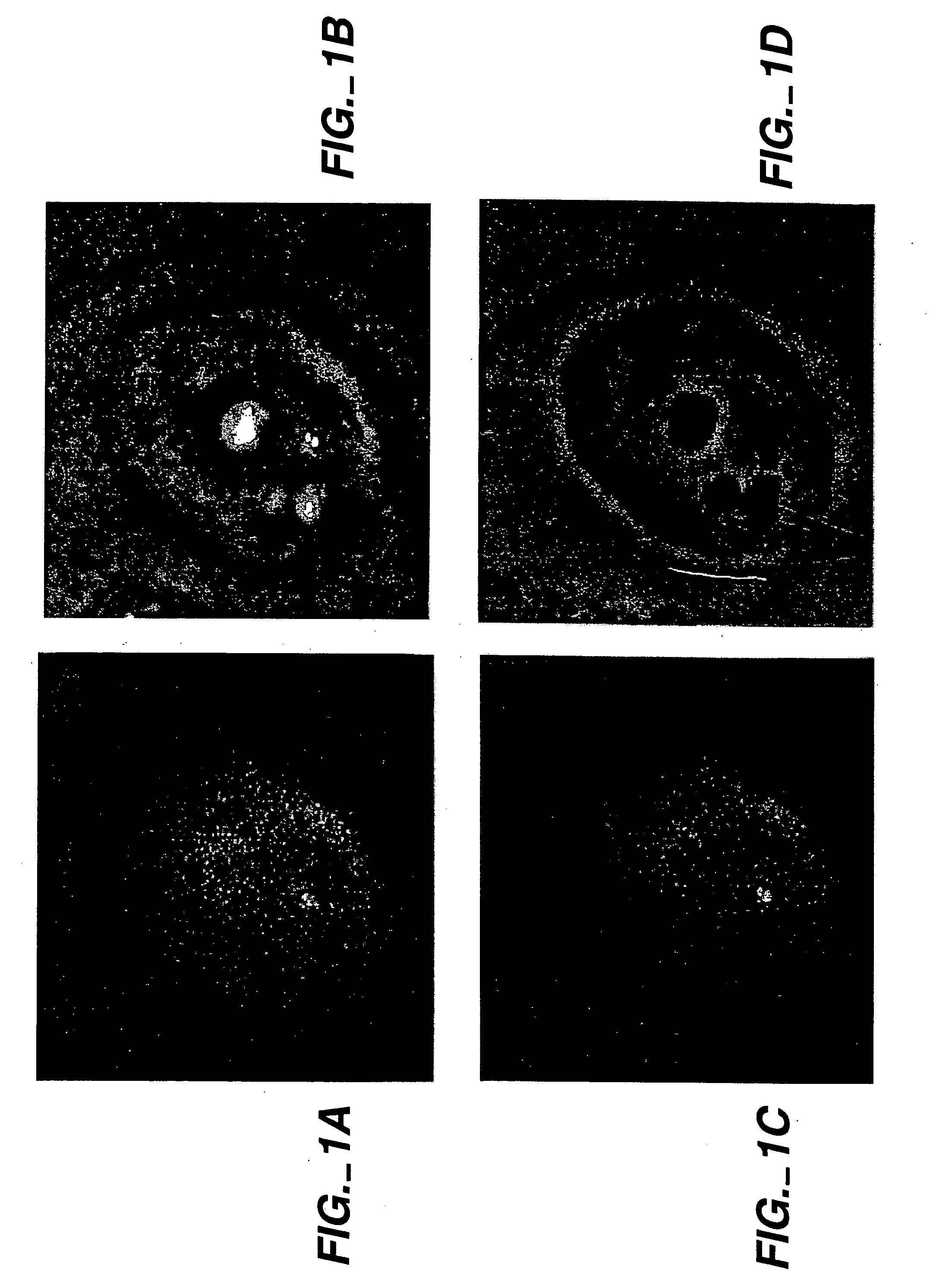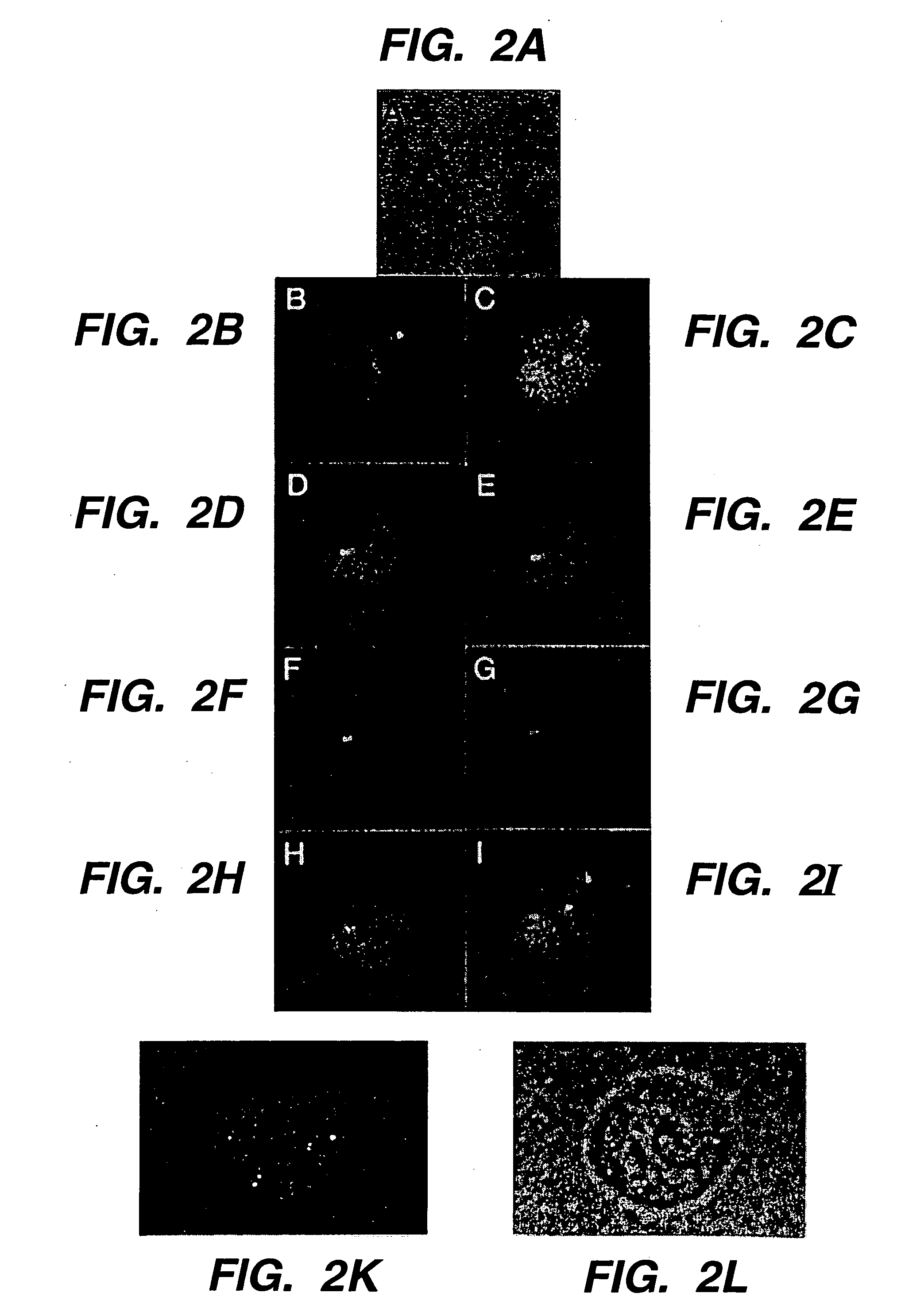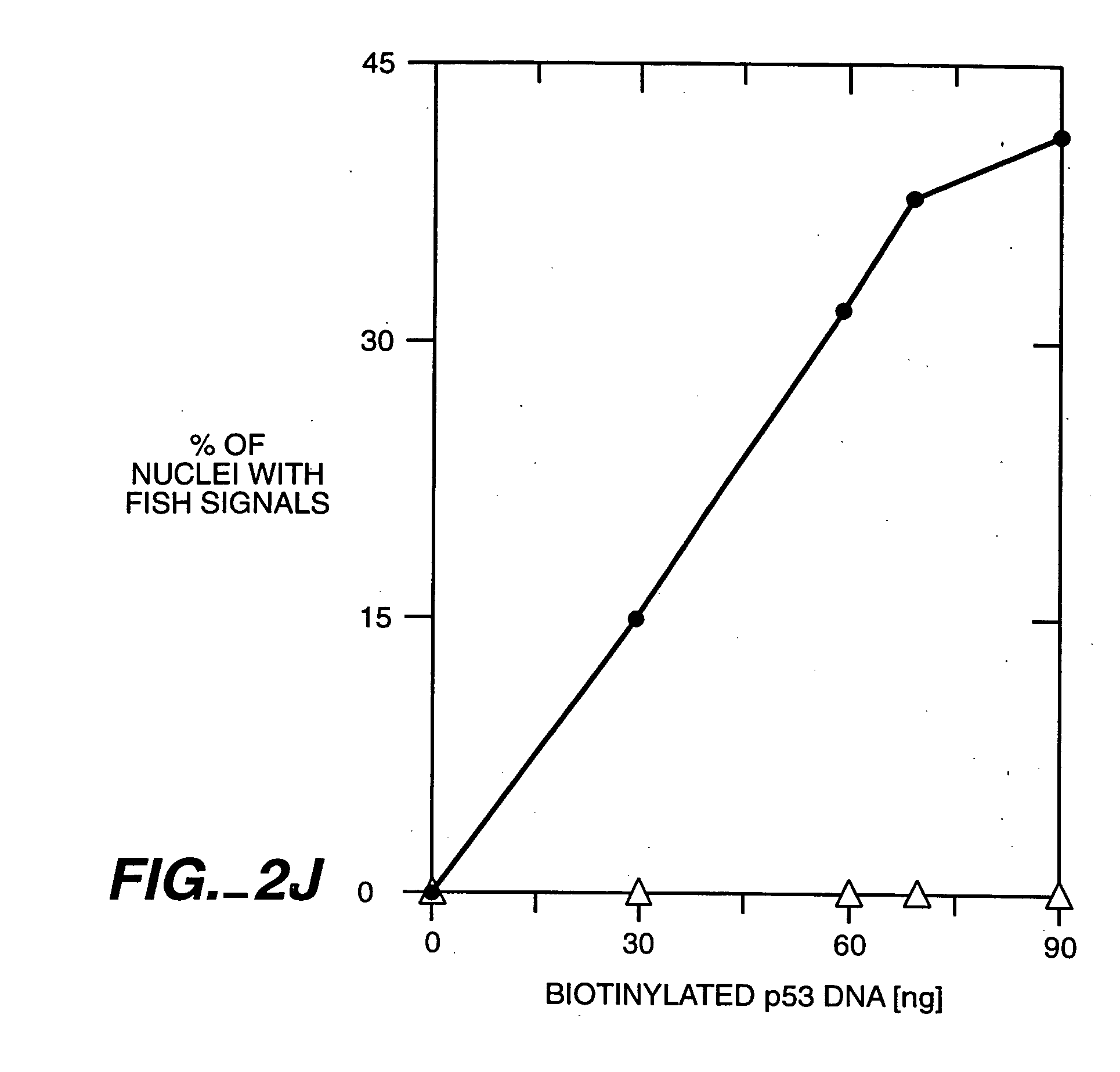In vivo homologous sequence targeting in cells
a technology of in vivo homologous sequence and targeting cell, which is applied in the direction of p53 protein, transferase, peptide source, etc., can solve the problems of insufficient utility of targeting recombination events at any particular chromosomal location in comparison to targeted general recombination, and the current methods of targeting homologous recombination are inefficient, so as to achieve diagnosis, treatment and prophylaxis.
- Summary
- Abstract
- Description
- Claims
- Application Information
AI Technical Summary
Benefits of technology
Problems solved by technology
Method used
Image
Examples
experimental examples
Example 1
Homologous Targeting of recA-Coated Chemically-Modified Polynucleotides in Cells
[0130] Homologously targeted exogenous targeting polynucleotides specifically target human DNA sequences in intact nuclei of metabolically active cells. RecA-coated complementary exogenous targeting polynucleotides were introduced into metabolically active human cells encapsulated in agarose microbeads and permeabilized to permit entry of DNA / protein complexes using the Jackson-Cook method (Cook, P. R. (1984) EMBO J. 3: 1837; Jackson and Cook (1985) EMBO J. 4: 919; Jackson and Cook (1985) EMBO J. 4: 913; Jackson and Cook (1986) J. Mol. Biol. 192: 65; Jackson et al. (1988) J. Cell. Sci. 90: 365, which are incorporated herein by reference). These experiments were designed to specifically target homologous DNA sequences with recA protein in intact nuclei of metabolically active human HEp-2 cells.
[0131] Jackson and Cook previously demonstrated that the nuclear membranes of human or other cells ma...
example 2
Correcting a Mutant Gene to Produce a Functional Gene Product
[0151] Homologously targeted complementary DNA oligonucleotides were used to correct 11 bp insertion mutations in vector genes and restore vector gene expression and vector protein function in microinjected mammalian cells.
[0152] Experiments were designed to test whether homologously targeted complementary 276-bp oligonucleotide targeting polynucleotides could correct an 11-bp insertion mutation in the lacZ gene of a mammalian DNA vector, which encoded a nonfunctional β-galactosidase, so that a corrected lacZ gene encoded and expressed a functional enzyme. Functional enzyme (β-galactosidase) was detected by an X-gal assay that turns cells expressing a revertant (i.e., corrected) lacZ gene a blue color.
[0153] NIH3T3 cells microinjected with the mutant test vector bearing an 11 basepair insertion in the lacZ coding sequence do not produce any detectable functional β-galactosidase enzyme. In contrast, cells microinjected w...
example 3
Correcting a Human CFTR Disease Allele
[0160] Homologously targeted complementary DNA oligonucleotides were used to correct a naturally occurring 3 bp deletion mutation in a human CFTR allele and restore expression of a functional CFTR protein in targeted mammalian cells.
[0161] A major goal of cystic fibrosis (CF) gene therapy is the correction of mutant portions of the CF transmembrane conductance regulator (CFTR) gene by replacement with wild-type DNA sequences to restore the normal CFTR protein and ion transport function. Targeting polynucleotides that were coated with recA protein were introduced into transformed CF airway epithelial cells, homozygous for both alleles ΔF508 CFTR gene mutation, by either intranuclear microinjection, electroporation, or by transfection with a protein-DNA-lipid complex.
[0162] Isolation and characterization of the CFTR gene (Rommens et al. (−1989) Science 245: 1059; Riordan et al. (1989) Science 245: 1066, incorporated herein by reference) has bee...
PUM
| Property | Measurement | Unit |
|---|---|---|
| time | aaaaa | aaaaa |
| temperature | aaaaa | aaaaa |
| volume | aaaaa | aaaaa |
Abstract
Description
Claims
Application Information
 Login to View More
Login to View More - R&D
- Intellectual Property
- Life Sciences
- Materials
- Tech Scout
- Unparalleled Data Quality
- Higher Quality Content
- 60% Fewer Hallucinations
Browse by: Latest US Patents, China's latest patents, Technical Efficacy Thesaurus, Application Domain, Technology Topic, Popular Technical Reports.
© 2025 PatSnap. All rights reserved.Legal|Privacy policy|Modern Slavery Act Transparency Statement|Sitemap|About US| Contact US: help@patsnap.com



